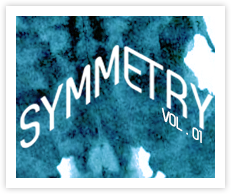

The Saturated Social Media Solution
Mike MacKenzie // November 29, 2011

A few short years ago Facebook and Twitter burst onto the public relations scene, and the industry was turned on its head.
Suddenly, there were innumerable efficient, effective methods for messages to travel not only from an organization to its public, but also just as easily in the other direction. Not just Facebook and Twitter, but all forms of social media were suddenly realized as having the potential to revolutionize public relations and communications. Social media became a solution to the challenges surrounding public engagement, providing an opportunity to not only speak but also to listen, to receive valuable feedback from the masses. Monologue would turn to dialogue, and relationships between an organization and its publics would be much stronger as a result.
Oh, the possibilities!
Now, seven years after the launch of Facebook and five since the hatching of Twitter, there has been more than enough time for the proverbial dust to settle. But when it comes to examining the relationship between public relations and social media, just where exactly are we?
In 2011, no one is going to deny that social media has completely changed public relations practice. But has it changed in the way that everyone expected? Has it made organizations more responsive to their publics? Does it balance the flow of messaging? Has it succeeded in turning speech into conversation?
I’m not so sure.
Today, more people and businesses are using social media than ever before. According to the social media outlets themselves, there are currently more than 900 million people on Facebook and over 200 million on Twitter. And today it is also unbelievably easy to hear about current events as they unfold, whether following the recent Occupy movement or getting real-time updates on what Kim Kardashian is having for dinner.
(Hint: it’s not Kris Humphries)
But in public relations, quality has to come before quantity. Though many people are using social media, this does not automatically mean it has revolutionized two-way communication . The ‘conversation’ promised by early social media advocates has been relatively muted. There are of course exceptions to this, but in reality many organizational uses of social media don’t seem very ‘social’ at all. If you take the time right now to review your Facebook profile, you may find that most of your notifications are ‘one-way’ – perhaps from businesses and organizations telling you to ‘like’ pages, attend events, or buy particular products. It seems as though many groups, if not most, are using social media like they would any other communication tactic – just another way to shout messages. It’s as if social media is actually contributing to the environment of one-way communication it initially sought to change.
To do something completely crazy for a public relations student, I’ll try to illustrate using an example from a field that most of us (myself included) stay far, far away from: science.
In chemistry, a saturated solution occurs when a liquid contains as much of a dissolved solid as it can possibly handle. Under normal circumstances, if you were to try and dissolve any more, you simply couldn’t. The solution is maxed out – at its breaking point. Anything else added in would go to waste because there’s no more room for it to be absorbed.
In a nutshell, this is what’s happening with social media.
As users, we are constantly bombarded with messages: invites to events we don’t care about, messages from groups we don’t remember joining, and recommendations to ‘like’ business pages so we win prizes we won’t even use. In my own experience, most of these messages go unread or even unnoticed; there are just too many people fighting for my time to pay attention to them all. In other words, there are more messages trying to be part of the environment than it can absorb. The solution is at its breaking point.
When you look at the situation this way, you may wonder if it’s possible to fix this problematic use of social media by organizations.
You may wonder if these problems are worth fixing at all.
But while there may be cause for pause when it comes to critically examining how social media is actually used as a communication tool, you needn’t deactivate your accounts just yet. That being said, if your focus is simply to advertise or promote your organization you might actually be better off just saying ‘no’ to social media. After all, there is a case in arguing that its overuse has actually strengthened both the power and the potency of a personalized approach.
Who would have thought that ‘the new approach’ to communicating with a public would actually make some of the more traditional methods more effective?
Of course, if your goal is to actively engage your publics and solicit opinions, hope is not lost. In reality, you simply need to get back to the basics and remember some wisdom from a few shorts years ago: At the beginning of the age of social media it was not simply its mass appeal that was promised, but also the emphasis placed on dialogue.
This is the key to escaping the maxed-out social media solution. Social media is more than gimmicks, prizes, or videos that go viral – it must be viewed as a tool to allow both publics and organizations to engage, converse, and communicate. Social media needs to be about the conversation. Period. By building the conversation you build the relationship, and by building the relationship you create the connection.
The rest will take care of itself.
